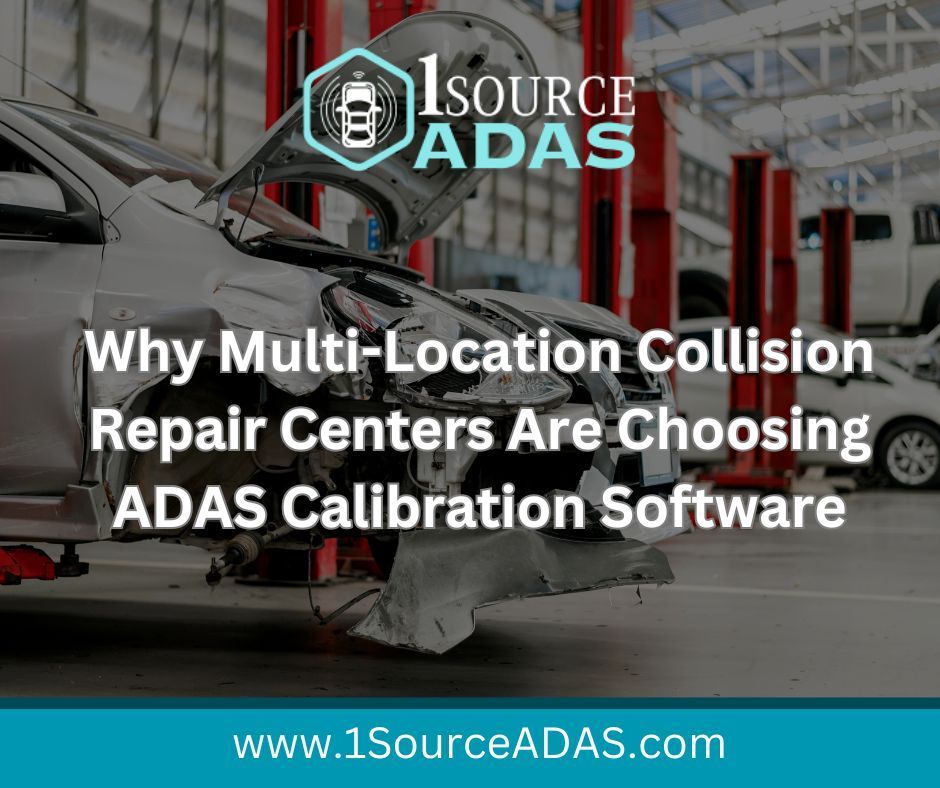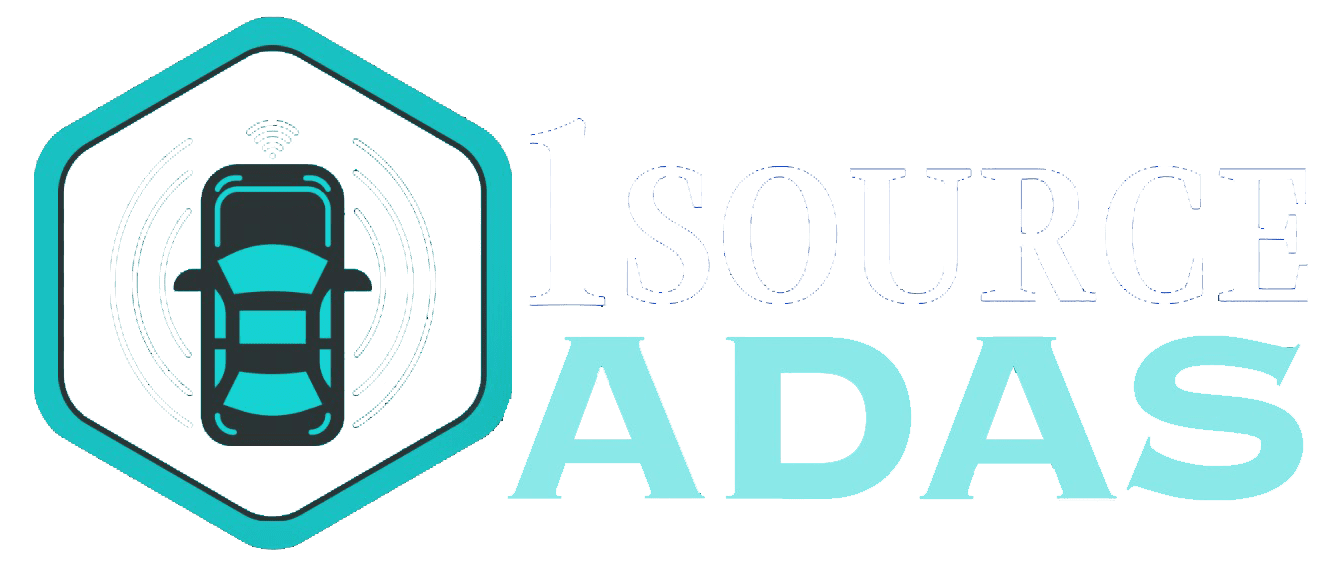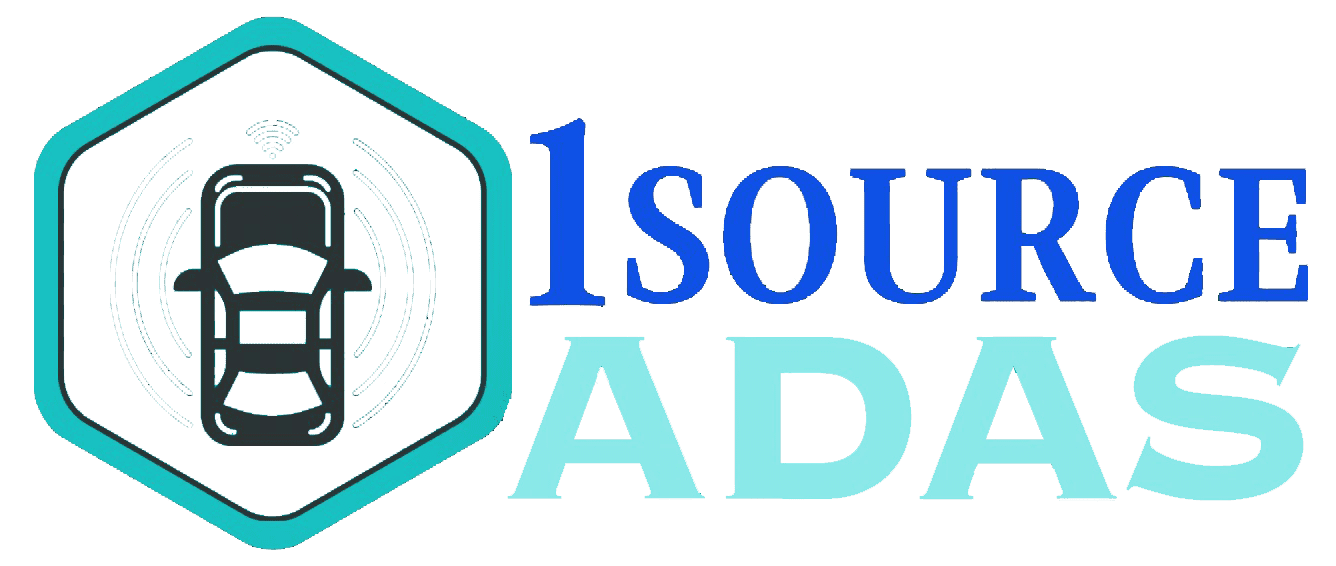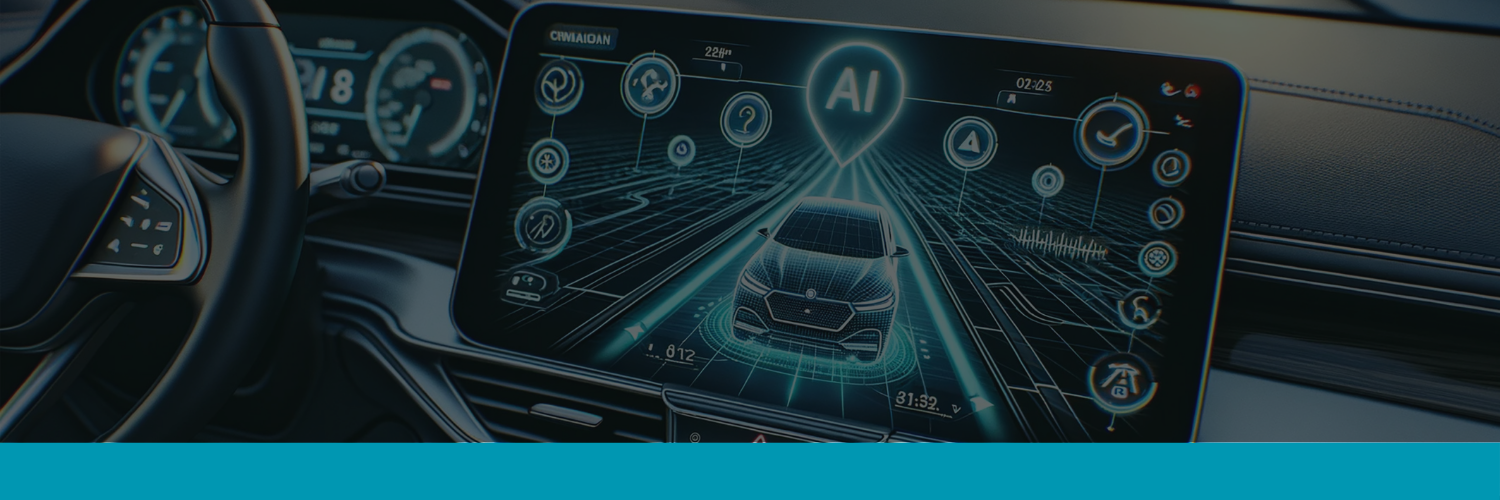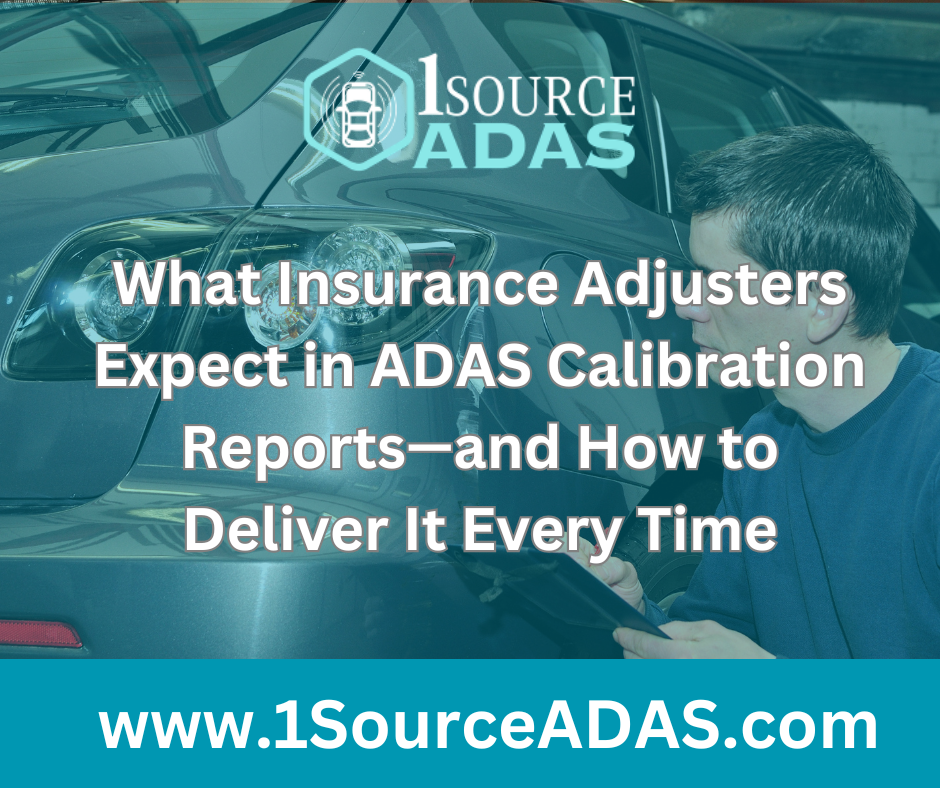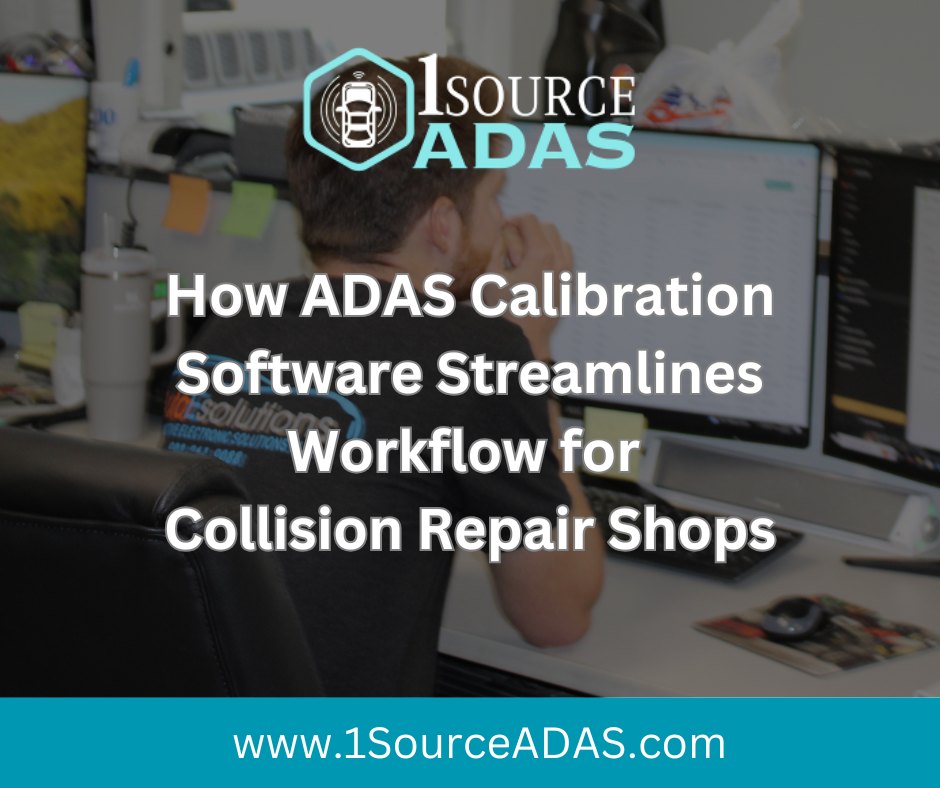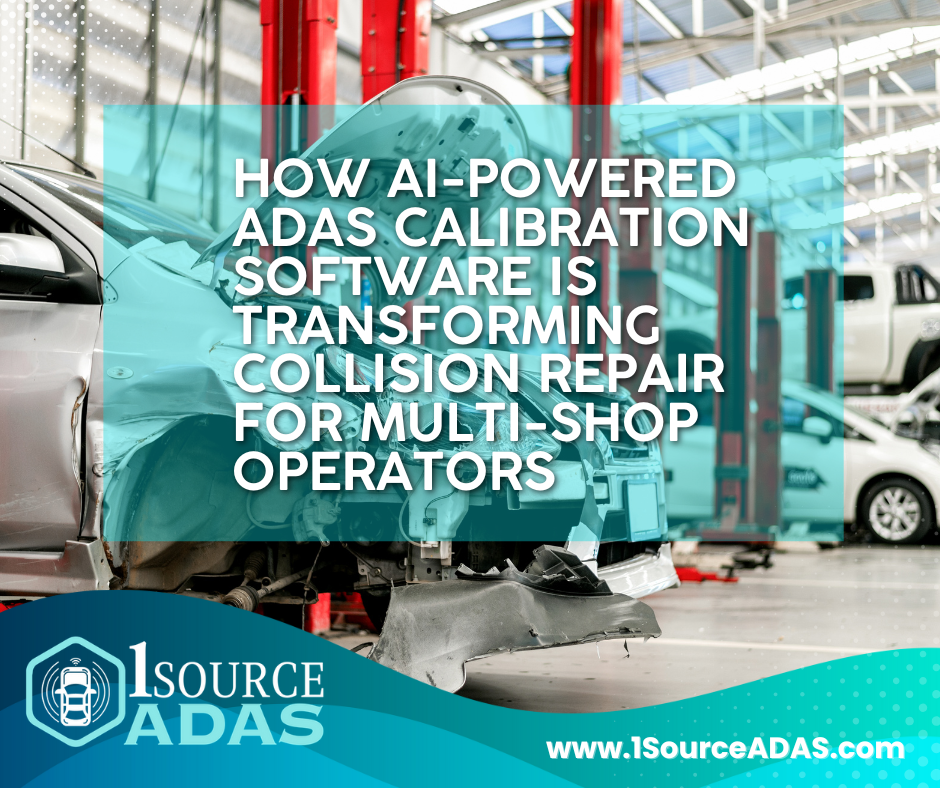Contact@1sourceADAS.com
Deciding Whether to Bring ADAS in House
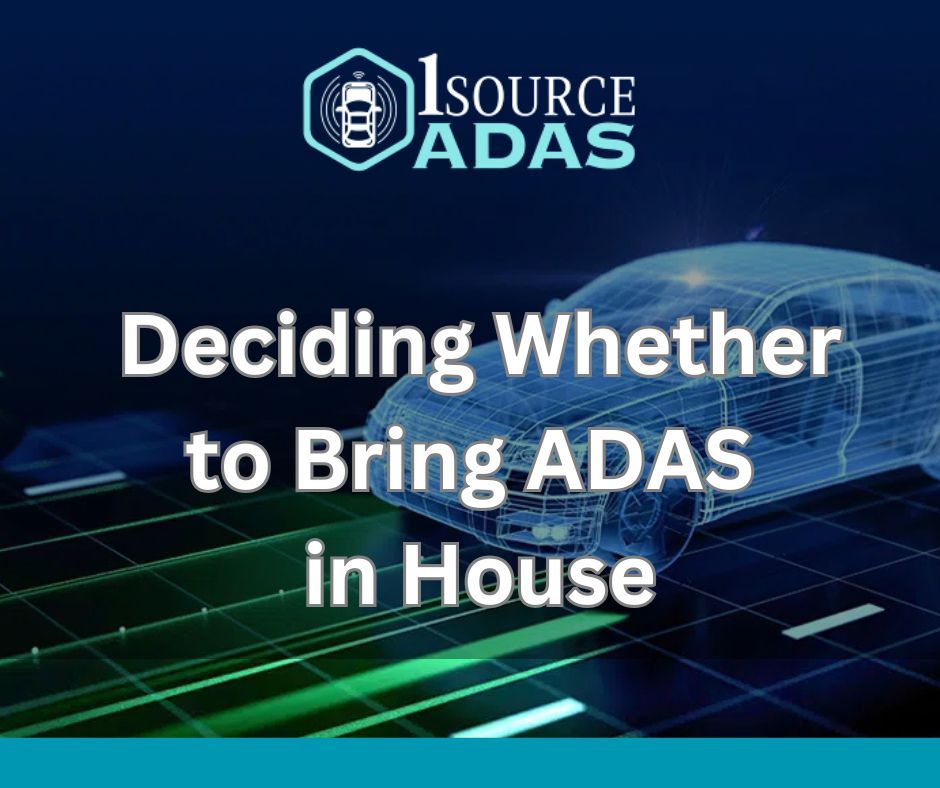
Deciding whether to bring ADAS (Advanced Driver Assistance Systems) calibrations in-house at your collision center involves several key considerations. Here’s what to evaluate:
1. Volume & Demand
- How many vehicles needing ADAS calibrations does your shop handle per month?
- Are ADAS-equipped vehicles a significant portion of your workflow?
- Do you frequently outsource calibrations, leading to delays or inefficiencies?
2. Equipment Investment
- Can you justify the cost of purchasing ADAS calibration tools (targets, scan tools, alignment systems, etc.)?
- Do you have space for both static and dynamic calibrations? (Static requires a controlled indoor area, dynamic requires safe open-road testing.)
- Are your techs trained to use calibration systems properly?
3. Training & Expertise
- Do your technicians have the necessary training to perform ADAS calibrations accurately?
- Are your technicians equipped and capable of diagnosing failed calibrations?
- Will you need to invest in continuous training to keep up with evolving ADAS technology?
- Would manufacturer certifications be necessary for your shop’s credibility?
4. Space & Facility Requirements
- Static calibrations require a clean, well-lit, extremely level space (often 30x50 feet or more).
- Dynamic calibrations need open roadways with proper conditions (clear lane markings, minimal traffic).
- Can your shop accommodate both?
5. Liability & Compliance
- ADAS calibrations must be 100% precise—are you prepared for the liability if something goes wrong? A properly trained and equipped sublet partner might mitigate some of that liability.
- Do you have the right documentation process for calibrations to meet industry and OEM standards?
- Will you pursue OEM certifications for added credibility and warranty compliance?
6. Cost vs. ROI
- What is the current cost of outsourcing ADAS calibrations?
- Would bringing it in-house reduce cycle time, improve profitability, and enhance customer satisfaction?
- How long would it take to break even on the equipment investment?
7. Insurance & Compliance Considerations
- Will insurance companies recognize and reimburse your in-house calibrations?
- Are you prepared to start another business to run ADAS through for proper reimbursement from the insurance companies?
- Are you prepared for potential audits or legal implications of incorrect calibrations?
Final Thought:
If ADAS calibrations are frequent, and outsourcing delays are hurting efficiency, bringing them in-house can be a smart move. However, if the volume is low or space is limited, outsourcing may still be the better choice.
Equipment Options & Cost Analysis for In-House ADAS Calibrations
1. Essential Equipment for ADAS Calibrations
A. Static Calibration Equipment (For Cameras, Radar, LIDAR)
- ADAS Calibration Targets & Frames – OEM-specific targets for manufacturers like Toyota, Honda, GM, etc.
- Digital Measurement Systems – Ensures precise positioning before calibration.
- ADAS Calibration Tools – Options include Bosch DAS 3000, Autel IA900WA, Hunter ADASLink, or OEM tools.
- Level & Lighting Setup – A dedicated, well-lit, level space (~30x50 ft).
B. Dynamic Calibration Tools (For Radar, Lane Assist, Adaptive Cruise Control)
- ADAS Scan Tool – Options like Autel, Launch, Bosch, or OE diagnostic tools to verify calibrations.
- Open Roadway Access – Required for vehicles needing dynamic calibrations.
C. Wheel Alignment & Pre-Calibration Setup
- ADAS-Compatible Alignment System – Many ADAS systems require precise wheel alignment (Hunter, John Bean, Hofmann, OEM Tools).
- Pre-Check Diagnostic Scanner – Ensures all modules function properly before calibration (Autel, Launch, Bosch, OEM (preferred method).
D. Calibration Identification, Requirements, and Procedures
- Calibration Identification Software – 1SourceADAS for identifying correct calibration requirements.
- OEM Calibration Requirements & Procedures – Alldata and manufacturer-specific subscriptions to ensure proper ADAS calibration steps are followed per OEM guidelines.
- Documentation & Reporting Tools – Software to log and verify completed calibrations for liability protection and compliance.
2. Cost Breakdown of In-House ADAS Calibration Setup
Item Estimated Cost Range
ADAS Calibration Targets & Stands $ 15,000 – $ 55,000
Digital Measurement System $ 5,000 – $ 15,000
Diagnostic Scan Tool $ 3,000 – $ 8,000
OEM Software & Subscriptions (1SourceADAS, Alldata, Sun Collision) $ 10,000 – $ 20,000/year
Alignment System (if needed) $ 25,000 – $ 50,000
Facility Modifications (Lighting, Flooring, Space Setup) $ 5,000 – $ 20,000
Training & Certification $ 2,000 – $ 10,000
Total Initial Investment: $ 50,000 – $ 150,000+
(Depending on how advanced and OEM-compliant your setup needs to be.)
3. Cost vs. ROI Analysis
Current Outsourcing Costs:
- Typical cost per calibration: $300 – $600 per vehicle
- If your shop does 10+ ADAS calibrations per month, you could be paying $3,000 – $6,000/month externally.
Breakeven Analysis:
- Example: If your total investment is $75,000 and you’re currently spending $4,500/month on outsourcing, your breakeven point would be 16-18 months.
- Shops doing 20+ calibrations per month can recover costs even faster.

